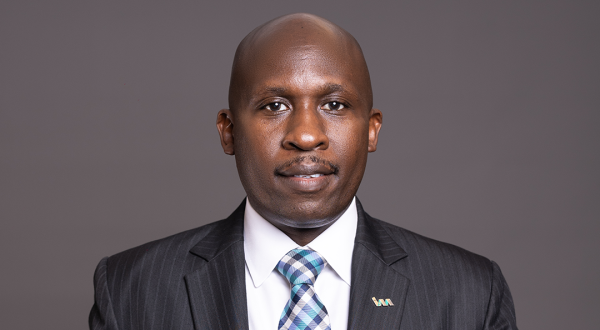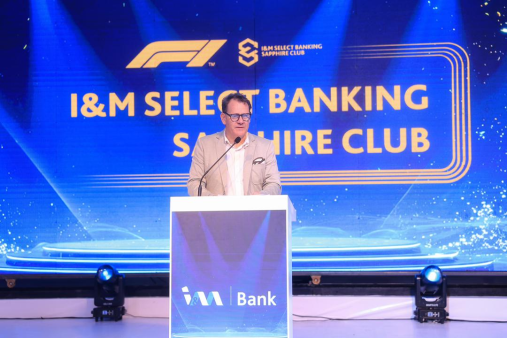In an interview with Muhereza Kyamutetera, the CEO East Africa Magazine’s Executive Editor, Robin Bairstow, the I&M Bank Uganda Chief Executive Officer, confirms that two and a half years later, these promises have been delivered, creating a solid foundation on which a vibrant and digital-first sturdy future is being built.
Q: For starters, for those who don’t know you well, talk about yourself and your management style.
A: I am a banking executive with three decades of experience across three continents. I’ve been able to mix and immerse myself in several diverse cultures, which has always been something that I’ve enjoyed. I love going to new places, and meeting new people, understanding cultures, and so on. And that’s helped me to develop a very much more adaptive management style, that I’m not this single one style fits all. You have to adapt to the local nuances.
I’m a firm believer in hard work. But we also have to have some fun because we tend to spend more time at the office than we do with our families. So my people need to wake up in the morning and be inspired and want to come to work. An engaged environment creates engaged staff; engaged staff are successful. Successful people are engaged, an engaged environment creates engaged people and it becomes unstoppable. Whenever you have a winning team that’s on a 10-match streak it is usually because everything connects correctly at the same time. It’s not that they are playing against bad opposition. Sometimes you don’t even need to have stars in such a team; it is because the players can live off one another smoothly and that’s the kind of organisation that I like to inspire and that’s the kind of organisation that I’ve left before coming to Uganda.
Q: Does that explain why the I&M Brand has gone all out, venturing into sorts and new partnerships in areas such as entertainment and golf⏤ areas that your predecessor brand wasn’t much into?
A: We need to be seen; people need to visualise and see the vision in our brand that we have of ourselves. Our brand DNA is young. Yes, as a brand we have a great past, but we’re not looking back. We’re looking forward and we’re looking forward with vigour. We want to do fun and exciting things. We’ve got a lot more planned both for our internal people as well as on the outside.
For example, our staff deeply participate in inter-company sports activities. We have one of the best soccer teams in the Corporate Football League and we have just started participating in the inter-company, swimming galas. We want to be, a bunch of fit, inspired and ready-to-go people for that’s what our brand represents.
We are also serious about creating value for our shareholders and servicing our customers but we want to do it with a positive attitude and in a positive manner. As a group, we’re moving towards donating at least 2% of our PBT to worthy causes. We are yet to get there as Uganda, but other countries like Kenya are there already. We’ve chosen some areas that we would like to focus on such as healthcare, education and the environment. We’ve done work with some hospitals in Uganda and we recently partnered with the Kenyan High Commission and are working at planting over a million trees. That’s really important.
We are very focused on our sustainability agenda and that includes even the buildings the Group is putting up that have gotten Leadership in Energy and Environmental Design (LEED) certification. They don’t just meet the minimum requirements; they are way in excess. They set the standards, as opposed to looking at the minimum requirements.
Q: It is now over 2 years since Orient Bank fully rebranded into I&M Bank. It has been 2+ years of change. What are some of the key milestones in these two years?
A: The most important has been the building of our external persona⏤ the I&M brand⏤ over the last two years from being completely unknown within this market to one of the most vibrant brands with a new look and feel.
The other key milestone was the culture change. When we took over, we had various cultures in the bank⏤ we had people who were formerly Orient Bank staff; then the new-to-bank staff, as well as a few other people from I&M Group, especially at the board level. We had three groups of people that needed to be aligned to a single culture- the I&M Culture. So, our first point of call was not spending money on new infrastructure and so on but was to make sure that the people were all aligned. That was done at the same time across the entire group under the PAMOJA initiative. It was a greatly executed campaign to welcome Uganda, the newest kid on the block into the I&M Bank family. It was a smooth process, moreover during the pandemic. That cultural change gave us a common set of behaviours and values to rally around. We were all singing from the same hymn sheet, which is really important, for if you’re going to do anything big, the people asset that’s going to do it for you⏤ the people that come up every day in the elevator⏤ is the asset that you need to focus on more, to ensure that they can then look after the other assets within the bank.
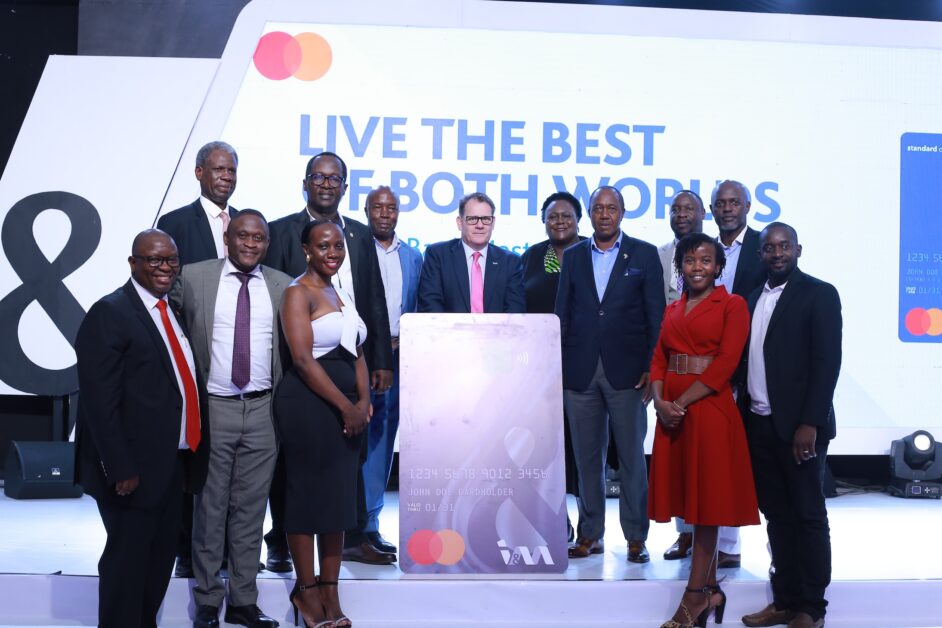
Once we had that, then some key changes were made within the leadership of the organisation.
When I&M invested in Orient Bank, we committed to doing several things and one of them was investing in technology and indeed there has been, a significant investment in technology.
First, we decided as an organisation to take on a new switch provider and then proceeded to change our infrastructure and architecture for all underlying IT equipment and hardware. We also changed our core banking system from Flexcube, which had hit the end of its life to Finacle, which is the same system the I&M Group uses. Finacle is a wonderful underlying platform, that helps you build all your capabilities on the platform. It gives the bank flexibility and the foundation to build and create a lot of things⏤ the kind that we wanted to do.
We also moved from being an issuer of Visa to being an issuer of MasterCard and everything. At the same time, we were sunsetting Visa and the old FastPay app, we were going online and on our OnTheGo App. We also introduced a new treasury system. All these were running concurrently⏤ we had to change the switch, then change the cards, then change the core banking system⏤ work started earlier in 2023 but gained more steam in October 2023 and we went live with most of the new stuff in January 2024.
To be able to change all of that in one go is not something that a lot of banks can do; usually, they do one of them at a time. Most of the market did not notice that all these changes were taking place and that is a good thing; it is an indicator that everything went well. That’s a testament to the people that were involved. Much of the core team was made up of Ugandan professionals; from the system engineers to product specialists within the front office, and the middle office- everybody was involved. We had a core team that worked solidly for three to four months.
All this investment in cutting-edge technology, gives us a great foundation, a springboard to build great solutions and deliver a superior customer experience. It allows us to, as we’ve done, launch new banking applications, launch the new on-the-go Internet banking system as well as allows us connectivity with the likes of our card providers, the switching company etc. It allows us to go forward with the launching of new products that use the system. Behind all of that is the goal of making it easier for the customer to bank with us. That’s the most important bit because you can launch as many products, but if customers don’t find them relevant and convenient, they won’t use them at all or even come to the bank.
More interestingly, while we were doing all this, the bank returned to profitability for the second time in a row. At the very start, we also had to clean up the balance sheet and get rid of some bad impairments, that were holding us back. After the heavy impairments, we’ve been able to build up our asset book significantly. In fact, by the end of the first quarter, we were about 30%, year-on-year growth within our assets and liabilities. So, the bank is performing well.
Customers still have a lot of faith and trust in trust in us. Let’s say we’ve weathered the storm and now it’s time, for us to capitalise on that, speed up our processes and deliver an excellent customer experience.
Q: It is fascinating how you have been able to flawlessly pull this off. What would you say has been the people factor in all this and how are all your other stakeholders Pamojaring to the new brand? Are they warming up to the I&M brand?
A: Going back to the culture change that is measured by the net promoter score within the bank has been quite high. The spirit of the staff and the level of engagement that has developed within the organisation is phenomenal otherwise we would never have been able to carry out all of this. They have worked above and beyond what most organisations are called upon to do. So, the brand change was embraced wholeheartedly, buoyed by the culture rollout and then embracing the common values and goals. And like I said earlier, well-engaged and involved staff create a superior experience for customers.
Looking specifically at how the customers have embraced the new brand as well as our refreshed services and product portfolio, it is important to look back at where we were coming from. You know the bank had been having some impairments which was a hindrance which hobbled the bank significantly. The significant impairments that affected our single obligor limits (the maximum amount a bank is allowed to lend to a single borrower) were reduced, and therefore, some customers we couldn’t serve, especially the borrowing customers were beginning to walk away.
But since I&M came on board, significant recapitalisation has happened and as of last year, we were well recapitalised in line with the Bank of Uganda’s revised recapitalisation thresholds, way ahead of the June 2024 deadline. The bank was able, to bring in additional capital, which obviously then enabled us to be able to increase our single obligor limits and we’ve seen customers that were forced to leave us because we weren’t able to serve fully their needs, now returning.
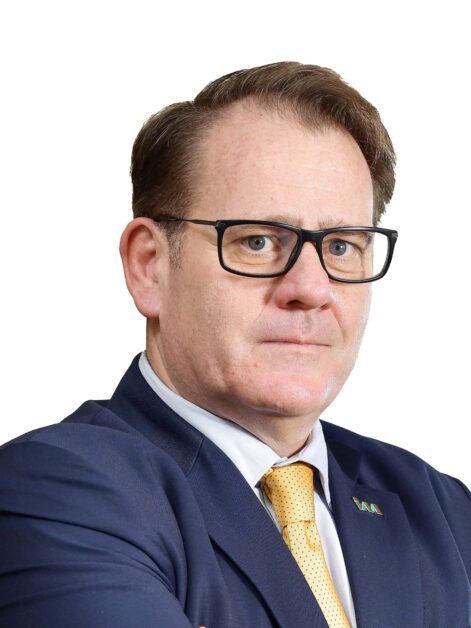
With the investments in technology as well as refreshed products we have been able to build new capabilities beyond the size of the credit that we can offer, but also in terms of the product offerings that we can do, especially on the cash management side⏤ they are now able to use more products and more services within the bank and we have seen them shifting their business back.
Q: The I&M brand marks 50 years in the region. For those who do not know, please paint a picture of the key highlights of the I&M Group Plc and the numerous opportunities it presents for the Ugandan audience. What are the benefits of being a customer of the larger I&M Group?
A: The biggest upside of being part of the I&M Group, besides the support that you get functionally, is the fact that we now have borderless banking between Kenya, Tanzania, Uganda, and Rwanda. We also have banking and support through our joint venture, BankOne in Mauritius. I think that’s the most important benefit.
We’re in the process now, post changeover to the new core banking system⏤ we’re finalising the process of being able to do cross-border payments between ourselves, so you can come in and cash your Kenyan, Riverside Branch cheque at the Kingdom Kampala I&M Branch. Your cheque from William Street in Kampala can be cashed in on Ngong Road in Nairobi, Kenya or 3rd Avenue in Kigali, Rwanda. Beyond physically cashing cheques, other benefits include making seamless and more cost-effective transfers. It is a straight-through process and instantaneous. That’s a massive benefit for our customers. We have received a number, of companies that have their head offices in Kenya that are now banking with I&M Bank in Uganda. At the same time, we have many Ugandan companies that have branches or outlets within the network countries and we serve well by being able to call on our regional expertise.
Q: What would you say are some of the things that I&M Bank in Uganda and as a Group, does so well and probably better than everybody else in the region?
A: There’s a couple of things. First of all, at our core, we’re a family bank with family values. We have long, deep-seated relationships with several customers. This bank before Dr Morjaria sold his majority stake in Orient Bank, it was also a family-oriented bank. The jelling of the two banks, each with family values certainly made us better. Our turnaround times are good. Our credit processing and the other services that we deliver, as well as our customer service, are what give us a little bit of an edge over the rest of the banks.
Because of our nimble size across the Group; because we don’t have bloated head office staff, everything is personal. We’re always personal, in everything that we do. We always put the customer first. I believe when it comes to technology, we have the same technology as everybody else⏤ we can offer deposits, special deposit accounts, current accounts, loans etc., ⏤ but when it comes down to what differentiates us in a very crowded East African market, it’s the fact that we are personal and we have customer service at our core.
Q: As the Group celebrates 50 years of being “Eastern Africa’s Leading Partner for Growth”, you have chosen “Strong Foundation and Future Focus” as your theme. Please explain why this theme and what customers should expect moving forward.
A: The theme speaks to the fact that our stakeholders should expect more of the same great partnerships, milestones and solutions and the mutual growth we have created over time, but with a lot more vigour. We intend to leverage both the customer base and the technology that we’ve invested in as a springboard to a better future, full of mutual growth.
I know some banks have shrunk their branches, but we are not shrinking our branches. We are in the throes of expanding. We’ve expanded in Kenya, in Rwanda, and we are looking for new premises in several outlets in Uganda and we continue to invest within the region. We are looking to invest in more technology, so customers can expect the rollout of more products, such as prepaid cards for travel wallets, and credit cards. We have a credit card launch on the horizon as well as the launch of online remote onboarding for our customers, to make recruitment more seamless. We’ve already invested in the technology to do instant issuance on the card side. We are also investing in reactivating dormant accounts and we’ve so far brought back about 40% of those customers, who for different reasons had stopped using their accounts with us.
Our digital pod- is the first of its kind here and working well and we plan to roll out more digitally orientated branches, which will then give the customer the choice of either using physical brick and mortar, or using a hybrid of both, or working completely online. So the choice that the customer has and is going to be more. This is our future focus.
Q: On this occasion as the I&M brand celebrates 50 years, what message would you like to send to all your stakeholders?
A: In line with our theme; Strong Foundation; Future Focus and looking at the way the bank has evolved over the years and the fact that we’ve in some instances leapfrogged into new areas⏤ our growth has been both organic and inorganic⏤ we remain focused on growing within the market in which we serve by largely remaining the innovational bank that we have always been. The way we approach innovation as a Group is that, although Nairobi is our head office, we don’t look at it as the only centre of excellence. Any country unit can lead an innovation, based on their strengths. For example, we just launched a recent project and the person who led it came from Rwanda. If there’s a good product in Tanzania or Uganda, we can launch that across the region. So, innovation is going to be the focus.
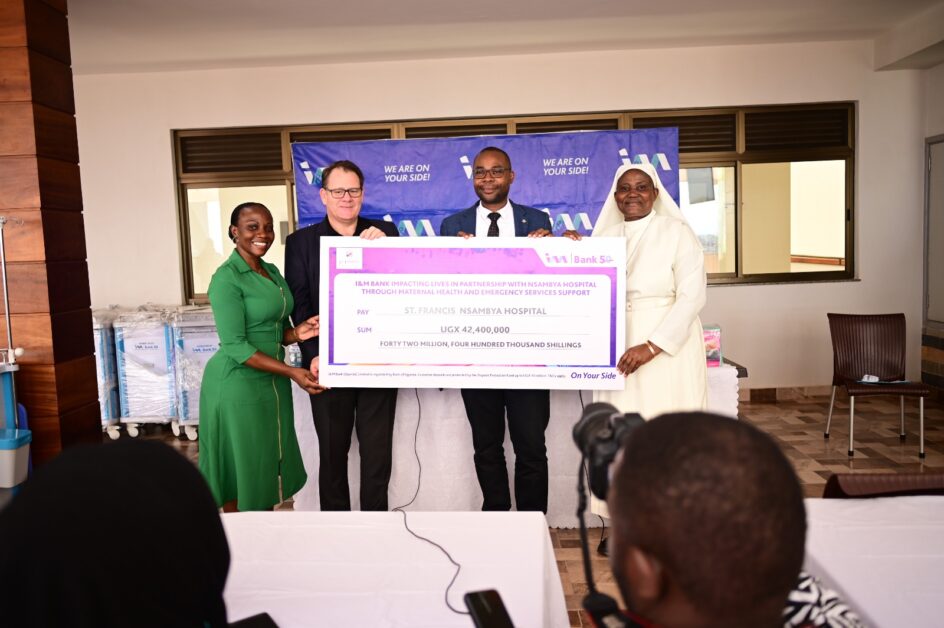
We are evolving. I hate to say the word digital. It’s very much of a means to an end because most of the focus needs to be on making sure that the customer can do things simpler; and that we don’t encroach on their time more than is necessary to obtain a service or make a transaction. The only way to do that is to develop new products and expand the size of the bank and its footprint. I know we have shrunk our footprint before, but no organisation has ever shrunk its way to success. At the end of the day, the big focus is on sustainable growth. We need our business to sustain itself because we can’t keep on going back to our shareholders to ask for more capital. We need to be able to have an achievable, sustainable growth ratio that allows us the ability to grow with our own money, especially by bleeding the investments we have made in technology, great people and solutions.
Q: Who inspires you as a person or as a leader and in line with that, what do you consider as some of the best advice you’ve received, and how has it been relevant to you?
A: I recently worked with one great female leader and one of the things she told me the other day was⏤ “choose your battles”⏤ you can’t, be doing everything for everyone all the time. This emphasises the need to choose where one can make a difference, and focus on that and do it so well. Although I have a lot of knowledge and experience, I can’t be the head of the various business units within the organisation. That then forces me to empower people to be able to do the jobs that they are employed to do. If I get too micro, I stifle their ability to grow. People need to sometimes trip and fall and graze their knees, but they have to know that at any one time, when they fall, the leadership of the bank, including myself will be there with band-aids and antiseptic soap to help them heal and get back on their feet and start again. Everyone needs to work with a lot of people to be successful. They also need to be allowed to fail and rise again. As long as we’re all learning from our mistakes, that’s what we will do. I like to think that I have surrounded myself with a bunch of really intelligent, hardworking people. I don’t purport to know everything. But I’ve got a great group of people who know a lot more than I do as a collective and I can draw on that while assisting them in areas where they require, but might not have that kind of experience.
Q: Speaking about managing people, everybody talks about Gen Z employees being a different kind of breed to manage. What’s your experience managing Gen Z employees? Are they that different and how do you manage them together with everybody else?
A: I am a Gen X; unashamedly Gen X. We are the generation that acts like the second-born. We are the rough-and-tumble group that didn’t have supervision. We didn’t have to phone up a friend’s parents to go around and visit, we just jumped on our bicycles or walked down the neighbourhood to go and play with our friends. Sunset was the alarm clock to go home. But it is different with the Gen Z. The new generation has been too protected. They’re too afraid or ashamed to ask for what they think they deserve. Most often and this is a real case, where a person is not earning enough money, instead of walking up to their employers and putting up a case, they’d rather go look outside. You will get to know this when it is too late- in the exit interview.
So, we have had to have more interactions. What we’ve done is, instead of having only half-year and end-of-year appraisals, we have had to also do quarterly check-ins. So you have conversations about different things. We are ‘forcing’ conversations. We have to get down and feel the temperature of the water; and listen to the sound of the river. You have to get down and understand what is happening in your organisation especially with Gen Z because that’s where we are, unfortunately, seeing a high turnover. We have put mechanisms in place to train, listen, mentor and coach them.
We’ve also ⏤ I did it where I was before⏤ employed mental health experts to have conversations about things like mindfulness, work-related stress, substances, and family values. If some staff don’t want to participate in the group conversations, we record the sessions so whoever wants, can play them back at their own leisure. That has since been expanded to include one-on-one sessions which are all covered under our medical scheme.
Q: Being a CEO of such a sensitive and fast-paced organisation must be a tough call. How do you stay sane in the fast lane? How do you manage to organise yourself, stay sane and enjoy your life like it’s supposed to be? It also gets quite lonely at the top, do you sometimes miss your younger self?
A: There’s no such thing as a younger self. The view that you usually have of the outside world is always through young eyes, no matter what age you are. So I enjoy sports. I’m not a big watcher of sports, but I watch the big games – football and rugby and sometimes cricket. My two passions are however football and rugby. I also participate in sports like cycling and swimming. I have a gym at home and I go punish myself a little bit every now and then. It doesn’t take a lot. I also zone out whenever I have an opportunity. I read a lot- both fiction and nonfiction and that also helps me a lot to zone out.
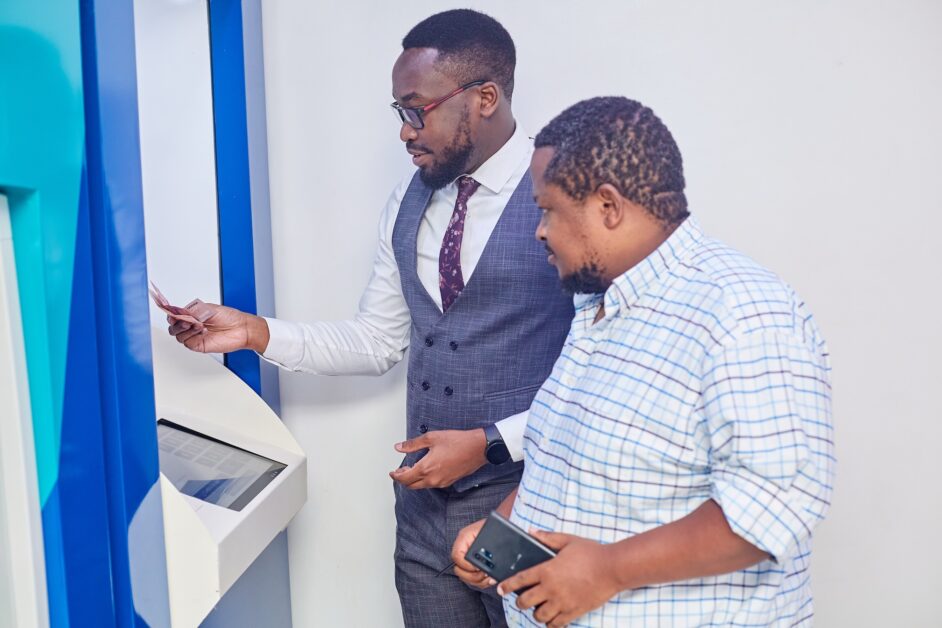
Then everyone in their way needs to look after their spirituality as well. Everyone needs to take care of that part of their life as well as be able to compartmentalize.
Compartmentalization is the art of organising your thoughts, emotions, or experiences into distinct mental “compartments” which then helps you to manage them more efficiently it is an area where I have always struggled so I’m very mindful of it. You have to, at some stage switch off, so that the noise in your head dies down a little bit⏤ switch off the gadgets and pick up a nice, good book and instead of swiping (the gadgets), you’re turning (the pages). I think that’s important for us, otherwise, we can just get sucked into the digital vortex and just lose a part of our lives to the digital world.
Importantly, you have to remember that life happens outside of the office. I’ve just started a little bit of a passion ⏤ working with people with disabilities, as well as people with mental illness. It’s very close to my heart. Altruism is alive and well, in my household.
Q: You have worked in Uganda before- in the early 2000s. What do you about the new Uganda 20 years later?
A: Yes, I have worked in Uganda before and I left in 2004. I worked for Standard Chartered Bank then. The Uganda I found when I returned can’t even compare to what it was 20 years ago. Everything is going digital⏤ immigration, the tax authorities and NSSF now give you a monthly update on where you are on your pension. The city skyline has changed greatly and you can get almost anything you want. Maybe you won’t get your favourite tomato sauce brand but there is tomato sauce and you can get anything and everything in this place.
The other thing is resourcefulness- Ugandans are so resourceful. You can get anything made, built, constructed, etc, in this place. I’ve had the opportunity to travel- I’ve travelled to West Africa, I’ve lived in East Africa now for many years as well as Southeast Asia etc. Uganda is more vibrant with the best nightlife in East Africa. It is the best. The pork joints, you don’t get it anywhere else. Those are some of the things that I was really looking forward to coming back to. Of course, I’m a little bit older now, for it is 20 years on, but Uganda is⏤ from the climate to the people a great place to be especially for those who like the outdoor life.
The other thing is there’s so much depth within this market from a talent point of view that is far more vibrant; far more professional.

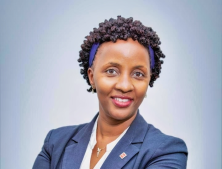 Letters to My Younger Self: Robinah Siima — “Success Is Quieter, But Richer”
Letters to My Younger Self: Robinah Siima — “Success Is Quieter, But Richer”